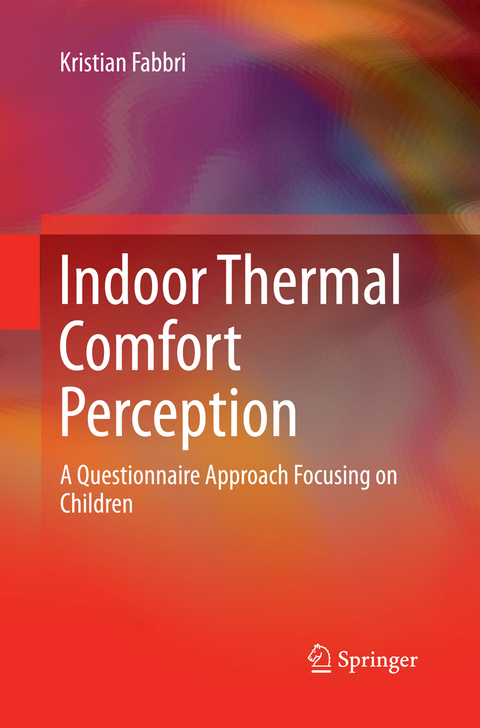
Indoor Thermal Comfort Perception
Springer International Publishing (Verlag)
978-3-319-36626-5 (ISBN)
- Titel ist leider vergriffen;
keine Neuauflage - Artikel merken
Providing a methodology for evaluating indoor thermal comfort with a focus on children, this book presents an in-depth examination of children's perceptions of comfort. Divided into two sections, it first presents a history of thermal comfort, the human body and environmental parameters, common thermal comfort indexes, and guidelines for creating questionnaires to assess children's perceptions of indoor thermal comfort. It then describes their understanding of the concepts of comfort and energy, and the factors that influence that perception. In this context, it takes into account the psychological and pedagogical aspects of thermal comfort judgment, as well as architectural and environmental characteristics and equips readers with the knowledge needed to effectively investigate children's perspectives on environmental ergonomics.
The research field of indoor thermal comfort adopts, on the one hand, physical parameter measurements and comfort indexes (e.g. Predicted Mean Vote (PMV) or adaptive comfort), and on the other, an ergonomic assessment in the form of questionnaires. However the latter can offer only limited insights into the issue of comfort, as children often use different terms than adults to convey their experience of thermal comfort. The books aims to address this lack of understanding with regard to children's perceptions of indoor thermal comfort.
The book is intended for HVAC engineers and researchers, architects and researchers interested in thermal comfort and the built environment. It also provides a useful resource for environmental psychologists, medical and cognitive researchers.
Arch. Kristian Fabbri has worked as architect and consultant on building energy performance, indoor environmental quality, human behaviour, heritage and energy management. He collaborated with Emilia-Romagna Region (Public Bodies) and SMEs trade and professional training organizations. He is Adjunct Professor in Environmental Physics Technique and Building Simulation, with the Architecture Department at University of Bologna. He has conducted research and issued publications in the same fields.
Introduction.- A brief history of thermal comfort: from Effective Temperature to Adaptive Thermal Comfort.- Ergonomics of the thermal environment. Human Body and Clothes.- The indices of feeling - Predicted Mean Vote PMV and Percentage
People Dissatisfied PPD.- Assessment of the influence of the thermal environment using subjective judgement scales.- The Thermal Comfort and Child Development Psychology.- Field research.- Kindergarten Case Study.- Elementary School case study.- Middle School case study.- Conclusions.
| Erscheinungsdatum | 21.10.2016 |
|---|---|
| Zusatzinfo | XI, 302 p. 99 illus., 47 illus. in color. |
| Verlagsort | Cham |
| Sprache | englisch |
| Maße | 155 x 235 mm |
| Themenwelt | Naturwissenschaften ► Biologie ► Ökologie / Naturschutz |
| Technik ► Elektrotechnik / Energietechnik | |
| Schlagworte | Architecture: interior design • Building Physics, HVAC • Child's Understanding of the Concept of Thermal Co • Child’s Understanding of the Concept of Thermal Comfort • Civil engineering, surveying and building • Cognition and cognitive psychology • Cognitive Psychology • Energy • Energy industries and utilities • Energy Policy, Economics and Management • Energy technology and engineering • Environmental Ergonomy of Children • Environmental Health • Environmental medicine • Heating, Ventilation, and Air Conditioning Design • HVAC Design • Indoor Thermal Comfort Assessment • Indoor Thermal Comfort Assessment for Children • Interior Architecture and Design • Predicted Mean Vote (PMV) • Questionnaire for Indoor Thermal Comfort Assessmen • Questionnaire for Indoor Thermal Comfort Assessment • Thermal Comfort Indexes • Thermal Comfort Judgement |
| ISBN-10 | 3-319-36626-2 / 3319366262 |
| ISBN-13 | 978-3-319-36626-5 / 9783319366265 |
| Zustand | Neuware |
| Haben Sie eine Frage zum Produkt? |
aus dem Bereich


